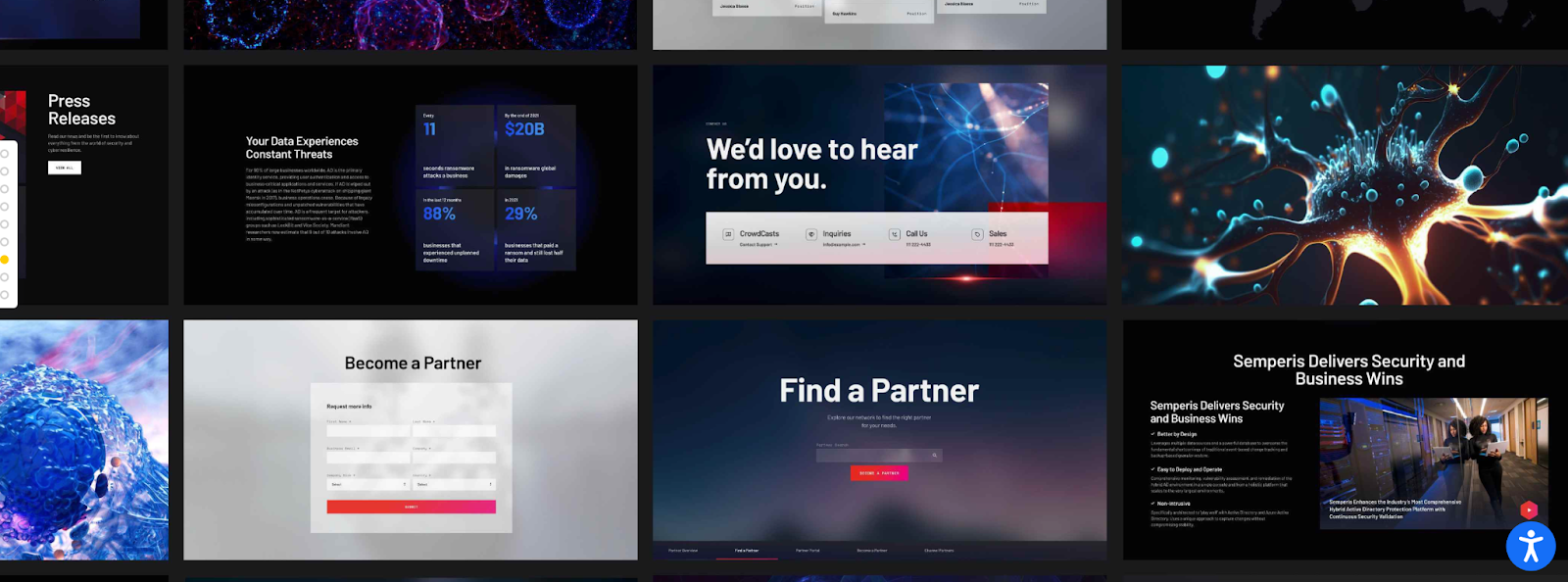From responsive web design to the explosion of minimalism and the rise of video content, design trends have shaped the way we engage with our audiences. But how important is it really to follow these trends, or will marketers be caught in a never-ending chase to stay apace?
Let’s take a closer look at the pros and cons of adhering to design trends in the digital marketing world.
The Case for Following Design Trends
Staying Competitive: In a crowded digital space, being distinct can be an advantage. Following trends can help your brand stay competitive and relevant. Up-to-date visuals and aesthetics can make your website, social media, and content more appealing to your target audience like in the case of our client, Semperis, a Cybersecurity company.

Increased Conversion Rates: A well-designed website or campaign that aligns with current trends can lead to higher conversion rates. People tend to trust and engage with brands that look modern and in touch with the times.
Improved User Experience: Many design trends emerge to enhance user experience. Mobile responsiveness, for example, is a design trend born out of the necessity to cater to an increasingly mobile-dependent audience. Following these trends ensures that your users have a seamless and enjoyable experience when interacting with your brand regardless of the device they use to engage. Here’s how we ensured visitors would see tailored information within a reimagined user journey for AI software giant, Dataiku.

Brand Perception: Your design choices reflect your brand’s personality and values. Staying current with design trends can help shape your brand’s perception as forward-thinking and adaptable.
Inspiration and Creativity: Engaging with design trends can be a wellspring of inspiration for your creative team. New trends can spark fresh ideas and innovative marketing approaches, as seen here in the case of our client, Mr. Justice.

The Case Against Following Design Trends
Short-Lived Fads: Not all design trends have longevity. Jumping on every design bandwagon can lead to a disjointed and inconsistent brand image. Trends come and go, but your brand identity should remain consistent.
Cookie-Cutter Approach: Blindly following trends can result in a cookie-cutter approach, where your brand looks like a clone of every other trendy brand out there. You risk losing the unique personality that sets your brand apart.
Neglecting Your Audience: Design trends might not always align with your target audience’s preferences. Your design choices should reflect your audience’s needs and tastes rather than the hot design trend of the hour.
Resource Drain: Keeping up with every design trend can be resource-intensive and exhaustive which may not be feasible for smaller businesses with more limited budgets and manpower.
Striking a Balance
So, where does the truth lie?
Here are some strategies to navigate the ever-changing world of design trends:
Know Your Audience: Always start by understanding your target audience. Their preferences should guide your design decisions, with trends being used as tools to enhance, not dictate, your visual language.
Consistency is Key: Maintain a consistent brand identity. Don’t chase trends at the cost of your brand’s unique personality.
Adapt When Relevant: Embrace design trends when they align with your brand values and audience preferences. Use them to enhance your marketing efforts, but don’t let them overshadow your brand’s essence.
Test and Iterate: A/B testing can help you determine which design elements resonate with your audience. Continuously refine your approach based on real-world data.
In conclusion, it’s important to acknowledge that design trends can be a double-edged sword in the world of digital marketing. While following them can bring benefits in terms of competitiveness and user experience, balancing trend-following with a solid understanding of your brand’s identity and your audience’s preferences should always be the approach taken. Strive for a design that’s both current and uniquely yours, and you’ll be on the right path.
